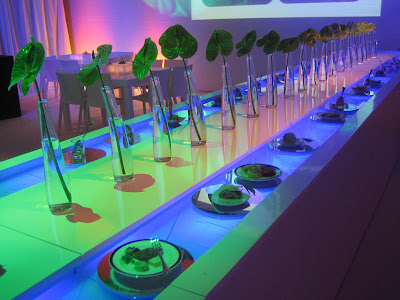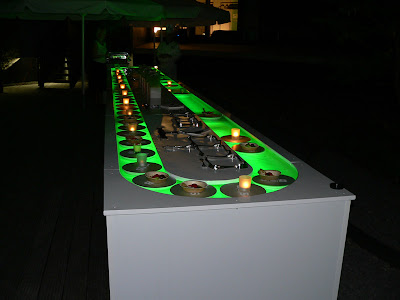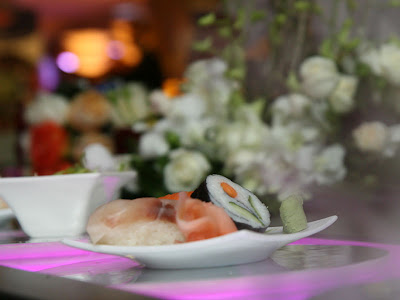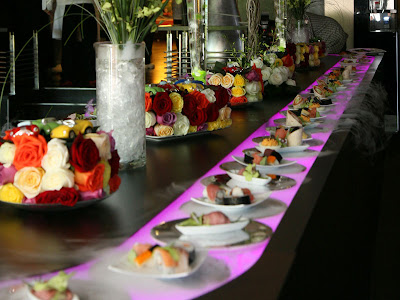Prisma News Periodico Nazionale di Informazione.http://www.prismanews.net/cucina/quando-la-cucina-diventa-poesia-intervista-a-gianfranco-chiarini.htmlQuando la cucina diventa poesia.Intervista a Gianfranco Chiarini
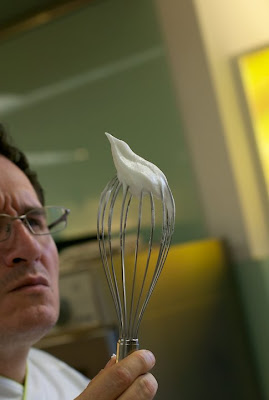
ChiariniLa cucina italiana é indubbiamente il nostro prodotto nazionale meglio riconosciuto all’estero. Il motivo risiede dalla combinazione di componenti quali la varietà di ingredienti e specialmente di vegetali, la fantasia nel ricercare sempre nuove combinazioni e ricette, ma soprattutto l’amore, la passione per il mangiar bene Pochi giorni fa ho avutoil piacere di incontrare ad Amburgo Gianfranco Chiarini, un cuoco italiano che ha portato il suo entusiasmo per il piacere del palato attraverso tutto il mondo.
Nato a Ferrara, nel cuore dell’Emilia-Romagna e cresciuto in seno ad una famiglia di cultura internazionale, si trasferisce prima a New York e successivamente a Caracas dove frequenta l’Istituto di Alta Gastronomia, e poi il Culinary Institute of America a Pittsburgh, e in Europa ha conseguito il diploma di Master Chef all’istituto Cordon Blue di Parigi, per poi tornare nella sua Ferrara dove viene nominato Maestro di Cucina dalla FIC (Federazione italiana Cuochi).
Sentendolo parlare si resta impressionati dall’energia investita nello studio dei sapori e delle loro combinazioni e guardando la sua homepage www. executivechefgianfrancochiarini.com si resta investiti da fotografie di piatti dove gli ingredienti sono come pennellate sulla tela, dove ogni colore è fine a sé stesso, ma tutti insieme formano l’immagine. Il tutto condito da splendida musica lirica.
Prima di cominciare l’intervista Gianfranco si scusa con me se il suo italiano non gli permette di trovare sempre la parola giusta, ma, mi dice, è purtroppo lo scotto da pagare quando si gira per il mondo e soprattutto si parlano 7 lingue….
Come si descrive Gianfranco Chiarini?Sono un italiano all’estero già da parecchi anni, sono una persona appassionata della cucina ed ho avuto il privilegio di lavorare in tutti i continenti nel corso di 25 anni. Ho avuto la possibilità di conoscere grandi Chef ma anche “piccola gente” da cui ho imparato tanto. Sono forse uno dei pochi Chef italiani che ha lasciato la propria patria per viaggiare per imparare tanto delle tradizioni e cucine di tutto il mondo.
Com’è stata la Sua esperienza all’estero?Sono nato e cresciuto a Ferrara, nel cuore dell’Emila-Romagna e poi con i miei genitori abbiamo girato diversi paesi. Sono cresciuto trilingue, con italiano inglese e spagnolo. Ho cominciato ad avvicinarmi al mondo culinario in Italia, America e Venezuela. Successivamente sono diventato Chef professionista e ho lavorato in Australia, Africa, Middle East e ovviamente qui in Europa.
Che cos’è per Lei la cucina italiana e come vede la cucina italiana nel mondo?La cucina italiana è il prodotto di 3000 anni di conquiste ed evoluzioni, partendo dall’Impero Romano, passando da Caterina de’ Medici, e poi il rinascimento fino ad oggi con i nuovi Chef. Si potrebbe parlare del maestro Vissani, o Heinz Beck che lavora al “La Pergola” a Roma (il ristorante dell’Hotel Hilton ndr) con tre stelle Michelin.
La cucina italiana è il risultato di tante culture diverse, è il risultato di quello che è riuscita ad imparare da tradizioni e influenze anche di tanti paesi. Ma è anche la cucina che è riuscita a dare a tante altre culture!
Che differenza c’è tra la cucina italiana e quelle, magari più blasonate provenienti da altri paesi?
GC: La prima forma di esportazione della cucina italiana è stata con Caterina de’Medici, sposata con Enrico II re di Francia´: ha portato con se la tradizione di come apparecchiare la tavola. Al suo seguito una schiera di cuochi e pasticceri fiorentini hanno trasmesso l’esperienza culinaria della Toscana del XVI secolo ai francesi. A volte la verità fa male, ma bisogna dirla…………
Quali sono i Suoi piatti preferiti, specialmente in relazione alla vasta esperienza in campo mondiale?La mia tradizione è ferrarese, mi piacciono i cappellacci di zucca, la salama da sugo, sono innamorato dell’ossobuco alla milanese, piatti semplici, che però per essere fatti per bene bisogna avere gli ingredienti giusti, quelli originali.
Nel 2011 esce un Suo libro in inglese. Ce ne può parlare?Il libro si intitola “The new reneissance of the italian fusion cuisine” 1.0, e avrá una copertina verde, a cui ne seguirà uno bianco nel 2012 e uno rosso nel 2013, così che alla fine lo Chef o l’amatore della cucina italiana si troverà in mano una triologia con i colori della bandiera italiana. Il nome trae origine dalla ricerca di definizione dei nuovi piatti della cucina italiana, senza per questo andare a mettere in secondo piano i “classici” che hanno reso famosa la nostra tradizione alimentare nel mondo.
Il libro è diviso in 11 capitoli dove descrivo nuovi modi di preparare dei prodotti tipici. Parleremo tra l’altro di ossobuco alla milanese, o di lasagne, ma reinventando la preparazione agendo per esempio su un ossobuco di cernia, o seguendo un altro metodo per preparare le lasagne. Parlo di Fusion perché ho unito la cucina italiana con quella francese, giapponese, polacca, coreana, araba, africana….. Il libro verrà distribuito attraverso il mio sito o i miei blog, e ogni copia verrà autografata e dedicata personalmente a ogni lettore.
Come definirebbe l’Italia e gli italiani?Noi italiani siamo il popolo più appassionato al mondo. Ci sono molti altri paesi con bravissime persone che mettono la passione in tutto quello che fanno, ma noi italiani….
La quantità di prodotti che viene dall’Italia a livello di musica, abbigliamento, alimentari, profumi, macchine, la nostra architettura…. L’Italia è un paese di passione, c’è nel sangue. Da noi è normale parlare forte, quasi gridare, muovendo le mani. Quando cucino io canto: per me la musica e la cucina sono cose intimamente collegate. Per questo ho messo sul mio sito foto di piatti realizzati in diverse parti del mondo e vengono sempre accompagnate da musica lirica italiana.
Riuscirebbe a consigliare un piatto descrivendolo in pochi secondi?Forse ci riuscirei in 15 minuti! Vorrei però suggerire un piatto interessante ottenuto dalla fusione della tradizione culinaria italiana e spagnola: saltimbocca di salmone con prosciutto di Pata Negra, in un nido di marmellata di carciofi con una delicata salsa olandese con finocchio selvatico e zafferano.
Qual’ è il Suo rapporto con l’Italia e con gli italiani?GF: Il mio rapporto con l’Italia è molto stretto, non solo come Chef Michelin ma anche per via di collaborazioni con diverse altre grandi aziende.
Il mio fine è quello di “educare” la gente a mangiare prodotti buoni, non inquinati con sostanze chimiche. Il mio rapporto con l’Italia è quello di proteggere la nostra cucina e le nostre tradizioni. Bisogna insegnare ai giovani a mangiare bene e mangiare sano, anche se con in po’ di stravaganza nella preparazione! La qualità degli ingredienti è alla base di una buona cucina.
Un’ultima battuta in conclusione…Viva l’Italia, il paese che è e resterà nel mio cuore, indipendentemente da quale accento avrò, e quante altre lingue imparerò!!!
Conclusa l’intervista e poco prima di andare via ringrazio Gianfranco Chiarini per il tempo che mi ha dedicato e per la travolgente poesia con cui ha descritto la sua professione e le sue teorie sull’evolversi della tradizione culinaria italiana. Sicuramente ci rincontreremo, magari attorno ad un tavolo imbandito…..


